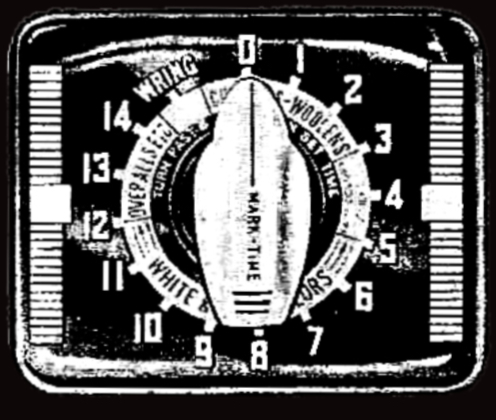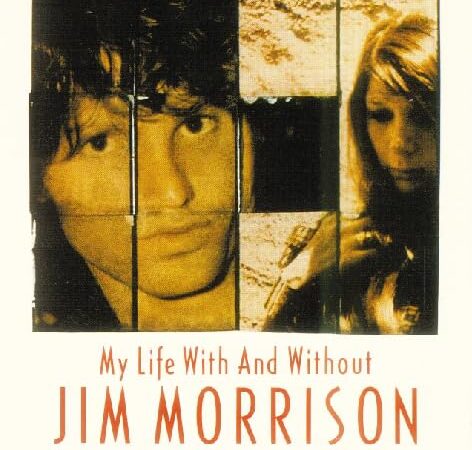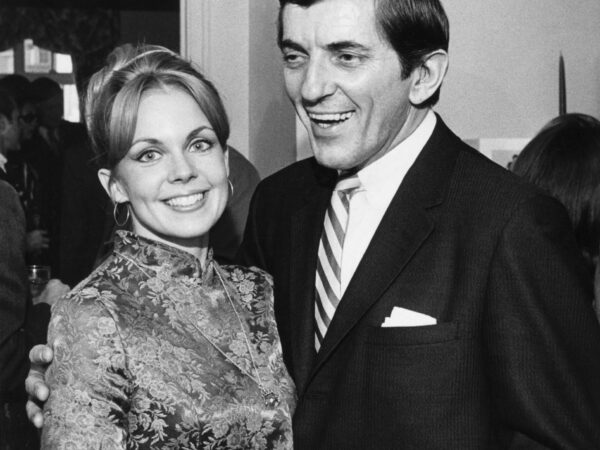It came and went, and no one noticed – 25 February was the 37th anniversary of the publication of Whitley Strieber’s Communion in paperback. Yes, it’s been thirty-seven years since Strieber embarked on his grand literary experiment, shoved his career as a successful fiction writer off a cliff, and turned the UFO subculture on its ear.

Like many Americans, I read the book, found it frightening, then filed it away in the recesses of my mind. Recently, one of those news blubs reminded me of the advent of Strieber’s strangeness – “On this day in 1987, Communion was published.” Like passing an accident, it piqued my curiosity, and I just had to look. Nearly 40 years later, Whitley’s actions are far more interesting than his prose. Why he went down the rabbit hole of the lunatic fringe is anyone’s guess. It fills me with the same morbid curiosity as finding your uptight conservative neighbor dumped his job, wife, and kids for a 20-year-old stripper only to find his ruin in Las Vegas. Always nosey, I had to see what had happened to the man since the late eighties.
We all know how this started. Once upon a time, Whitley Strieber was the author of bestselling and critically acclaimed horror novels. By the early 1980s, he was considered the next Stephen King. While King’s writing had sophomoric appeal, Strieber’s was far more cerebral. Comparing the two, Stephen King was a perpetual blue jeans and tennis shoes-clad teenager churning out pulp at a breakneck pace. Strieber, more respectable, was the cultured college professor dressed in tweeds and Bass Weejuns, measuredly writing vividly profound prose that captivated his audience, even if his esoteric allusions went over our heads.
Whitley’s first two novels were indeed wildly successful. The Wolfen (1978) and The Hunger (1981) were made into successful feature films. Unfortunately, his subsequent novels did not achieve his previous success. His career cooling, he tried the popular alien abduction genre.
Launching the hardback edition in January 1987, Communion – A True Story took the world by storm. The paperback publication a month later put Communion everywhere. The book stayed on the New York Times Non-Fiction Bestseller list for eight weeks. Strieber, a well-known author, and a brand name, gave the whole alien abduction fad legitimacy.
Whitley’s tale begins on Boxing Day 1985 in a cozy cabin in upstate New York amid Christmas presents and leftovers. After reading Science and UFOs by Jenny Randles, he retired to bed. Sometime after, he awoke to a “whooshing” sound and felt there had been a crowd in his house. Strieber was fearful and stressed in the weeks after. He felt terrible physically, and his butt hurt.
Three months later, in late March 1986, Strieber contacted well-known author, UFO researcher, and amateur hypnotist Budd Hopkins to see if UFOs were to blame. After having a hypnosis session to recover repressed memories (a method discredited a few years later), Whitley recounted that non-human entities invaded his bedroom. These little aliens spirited him out of his snug cabin to a clearing/room/spacecraft (he’s not sure which). There, in whatever place, Strieber alternately lectured the beings on their poor housekeeping habits and was subjected to bizarre, humiliating experiments. One being helpfully asked, “What can we do to help you stop screaming?” before giving Whitley a free colonoscopy, retrieving other body fluids, and sticking needles in his skull. After intensive hypnotic sessions with Ufologist Budd Hopkins, group therapy, psychotherapy, interviews, and research, Communion was conceived and miraculously published in about six months.
Even though his status as a bestselling horror fiction writer strained readers’ credulity, Strieber had an instant bestseller on his hands. The toast of the talk show circuit in 1987, Communion catapulted Whitley to superstardom in the UFO subculture as a bonus. Everything should have been smooth sailing and his future bright. Unfortunately, things turned out far differently.
Whitley’s bromance with Budd Hopkins ended abruptly in 1988. Hopkins, the reigning king of alien abduction books, watched his book sales and popularity decline in the face of Stieber’s. Hopkins’ next book, Intruders, was delayed by the release of Communion, as his publisher felt his book could not compete commercially with Strieber’s. Of course, this did not make Hopkins happy at all.
Too, Hopkins was not sure Whitley was telling the truth in his sessions. In one, Strieber gave a wild recounting of being menaced by Mr. Peanut as a child. Another unbelievable tale involved a grabby airline stewardess. Apparently, the lady grabbed Strieber’s man parts and led him off an airliner by his penis in one “forgotten” episode of his youth. Budd Hopkins’ friction with Strieber grew rapidly. As Hopkins was a bestselling non-fiction writer himself, the Communion story seemed too good to be true. He was also unhappy that such an upstart was replacing him as the headliner on the talk show and UFO convention circuit and wrecking his book sales. The rift between the two became unreconcilable. Ultimately Hopkins joined other UFO authors who dismissed the book as a confabulation.
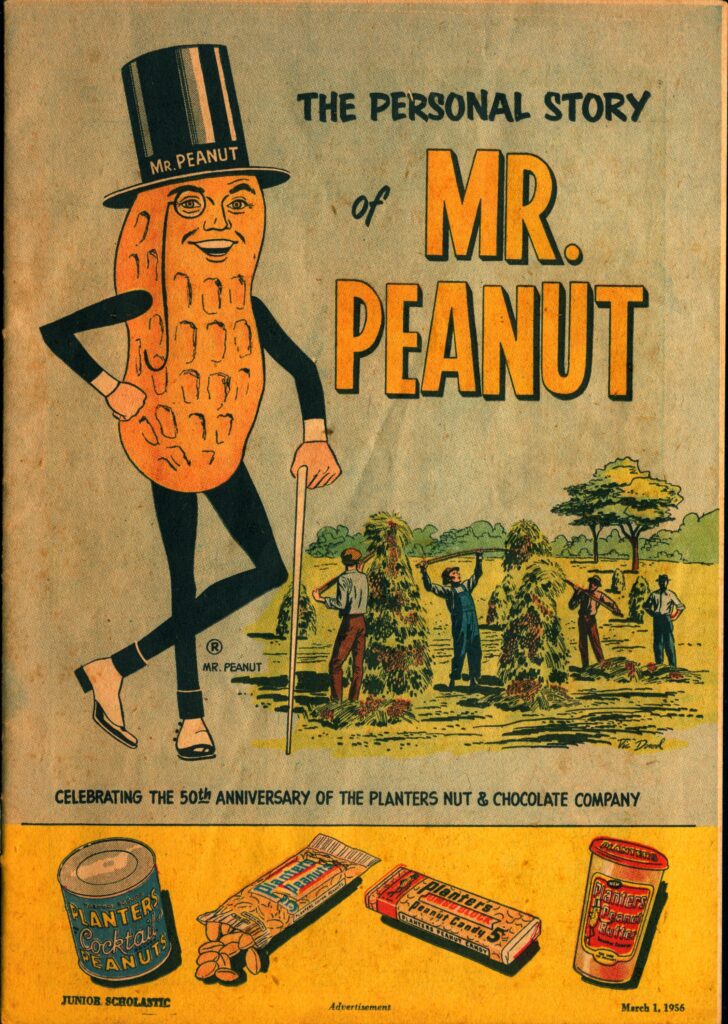
“Literary Hoax” was also the word among Strieber’s horror fiction peers. Writing a clever book is one thing; writing a ho-hum book and publishing it as “a true story” to make it clever is quite another. This is tantamount to cutting in front of those who wrote better fiction stories that could stand on their merit without resorting to cheap gimmicks. Many were uncomfortable with the supposed timeline of writing the book. Strieber’s claims of taking this book from concept, for which he received a $1 million advance, to the final draft in less than six months while still undergoing psychotherapy was less believable than space aliens. As a result, he found himself a pariah and shunned by his contemporaries in the horror/dark fantasy fiction community.
But wait! There’s more! Whitley was offended that anyone doubted his word. In a huff that anyone would dare call his book a hoax, Whitley doubled down on this alien story. Releasing Transformation in 1988, Strieber cast himself as a rape victim; anyone who laughed at him was laughing at his victimhood.
Transformation debuted as a #1 bestseller but only stayed in that position briefly. Expecting a book full of further alien encounters, Strieber fans were disappointed. Though Transformation had a couple of alien tales, the book was a potpourri of New Age mumbo jumbo. Reading like an amalgamation of Shirley MacLaine books, JZ Knight’s “Ramtha” psychobabble, and G. I. Gurdjieff‘s philosophy, Transformation was unsatisfying. Too, Strieber now presents himself as a prophet. He is the Chosen One, who will lead humans to their next stage of evolution. All a reader had to do was follow Whitley through his journeys in out-of-the-body travel, meditation, trance channeling, and ESP. Then they, too, could have meaningful encounters with human friends thousands of miles away, aliens passing through the atmosphere, become one with the universe, or confront a British Colonial Colonel from the Victorian era, as Strieber alleged he did in one chapter.
This sequel was such a wreck that many newspapers, including the Los Angeles Times, pulled the book from the bestselling non-fiction list and placed the book under the Fiction Bestseller heading—none of this pleased Whitley. At this juncture, Strieber started acting out at the public’s disbelief. There were tales of public confrontations with Budd Hopkins, meltdowns at UFO events, and at least one temper tantrum in the green room before a scheduled live TV appearance.
By the mid-1990s, Whitley jumped head-first down the rabbit hole of the lunatic fringe. Now he was holding court with Art Bell on Coast-to-Coast AM, promoting conspiracy theories, sometimes with life-threatening results. To muddle things a bit more, in 1990, Strieber started writing alien fiction, which he sold as fiction. Of course, he churned out more personal adventures with his alien “visitors.” Confusingly, sometime In the 1990s his views on his “alien” experiences began to change. One book would say the visitors were a real 3D experience, the next would contradict the last saying his visitors were a spiritual experience. Then he mixed all this with conspiracy theories and anti-government rhetoric. This back and forth continued until book sales fell. Strieber blamed the cartoon South Park for damaging his career and making him a laughingstock, instead of blaming himself.

As the 21st century dawned, Strieber tried one last “Hail Mary” to prove he wasn’t a nut. Proclaiming he now had an alien implant in his left outer ear, Whitley now announced he had solid evidence of his alien visitors. Working with an eccentric podiatrist performing surgery outside of his expertise, he wrote the sacramentally titled Confirmation. Through Dr. Roger Leir’s “findings” and implantee fan letters, Whitley claimed there was undeniable evidence of alien mind control experiments. Mysteriously, Whitley’s own implant could not be removed as it would move of its own accord. Still, he claimed proof as there were “scars behind my ear to prove the failed surgery.” Alas, when the podiatrist died, his collection of “implants” proved to be terrestrial objects – bits of metal, glass, fibers, wood sprinters, etc., the things most of us pick up during a lifetime of minor cuts and abrasions.
To date, Strieber has penned over 47 books, both fiction, and nonfiction, with a few speed written under the influence of his alien implant. Each non-fiction book promises a solution that never materializes. His answer to life’s pressing questions, UFOs, and religion et al, is just over the horizon in the next “true“ novel he confabulates, if readers will just keep reading them.
He now rules over his kingdom of gullible teenagers, kooks, and diehard fans at his website Whitley Strieber’s Unknown Country. There you can read all of his profound thoughts or listen to his podcasts about predictions, messages from everyone from Christ to his late wife (he channels), anti-government conspiracy theories, doomsaying, and the latest on UFOs and his “visitors.” All you need is a subscription of $39.50 per year or $350 lifetime to be privy to the musings of a modern-day messiah. Sadly, he still hasn’t decided if the visitors are from another planet, or from elsewhere, or if they really do exist, and if they do, what purpose they serve. Currently, he’s leaning toward “they are evil.” Thankfully, he dropped the anal probe gimmick. By the mid-1990s, it was no longer novel as most of us had experienced the nightmare of drinking a liter of GoLytely and battling our insurance carriers over colonoscopy coverage.
It’s beyond the scope of this blog to give Strieber’s alien encounters a good debunking. I wasn’t there, so I don’t know what happened. But when asked if I believe those tales in Communion, I have to say “no.” Several things raise suspicion. First, 37 years later, there is still no concrete proof of alien visitations, UFOs, inexplicable surgically removed implants, or anything Whitley writes about. Even Whitley’s very own alien implant seems to have taken a powder from the real world. CFI’s Robert Shaeffer sat behind Strieber at a MUFON conference in 2012 with a full view of his left ear. Snapping a few pictures, Shaeffer found there was no bump or “horrible scars” from botched surgery present. Perhaps, like a leprechaun’s pot of gold, Whitley’s implant vanishes at sunrise, or, like Dracula, it can’t be photographed.

Secondly, Strieber is a man with a notoriously bad memory. He asks us to take on faith his “recovered memories” found by the discredited practice of hypnotic regression therapy. However, Whitley’s conscious memories are so bad that he can’t remember whether or not he was present during the Whitman Massacre at the University of Texas in 1956.
Lastly, Whitley’s timeline of the actual writing of Communion is suspect. Based on the information he has written, he did not seek counseling until late March 1986. From there, he underwent intensive group therapy, psychoanalysis, and hypnotic regression, things that sometimes take patients years, in just a few weeks. Yet, in the throes of mental anguish and doubting his sanity, he could somehow send his publisher a book proposal and receive a $1 million advance. Then he miraculously completes research, writes the book, and the final draft is ready to go to press by 1 January 1987. This is less than eight months, a doubtful amount of time.
I have my own ideas about how the book Communion came about. Just my opinion, but I think the book happened like this:
Communion probably began as a mediocre fiction novel consigned to Whitley’s trunk sometime in the early 1980s. During those years, Stieber took his first foray into writing in first-person speculative anti-war fiction War Day with James Kunetka. He also started using paranoid, anti-government tropes in this period, tropes that would be useful for the paranoid UFO audience.
Cue real-life strangeness – the Hudson Valley UFO Wave was ongoing in the summer of 1984, and his notorious vacation cabin was located in this area. Interest aroused, Strieber read the bestseller Missing Time, by Bud Hopkins and met the author. Hopkin’s alleged alien motifs of bizarre experiments, erased memories, and implants became future tropes for Whitley.
Unfortunately, a fiction novel about alien abductions, group therapy, and hypnotic regression is plodding. Why not let the author become a character in his own novel to jazz things up? Looking for one trope never seen before in print to send the book over the top, the evening news tossed one into Strieber’s lap in July 1985. After a routine physical, President Ronald Reagan was found to have a cancerous colon polyp. The medical hero – a new procedure called the video-aided colonoscopy. As America repeatedly took a journey through 11 feet of Reagan’s intestines and heard details of the procedure in the news, that created enough ewwwww factor to nauseate everyone involved.
Plucking this ewwwww from the headlines, Strieber deftly inserts Reagan’s bowel woes into his prose. Then he sprinkles enough weasel words through his manuscript to give him an “out“ worthy of a carnival psychic. His alien encounter might be a hallucination. Or it might not. This ambiguous “wink-and-a-nod” strategy convinces Morrow to publish the book as – are you ready for the pièce de résistance?- non-fiction. Non-fiction erases the plodding from the investigative parts of the novel. As the author states, he’s unsure of the experience’s reality, so it can’t be called a willful literary hoax. But, bless his heart; this idea is a surefire way to get a bestseller despite the risks. The rest is history, and everyone laughs all the way to the bank.
As his legacy, Strieber has redefined UFO mythology. His bug-eyed alien, his anal probe, and his mind-controlling implants are now part of modern mythology. The tales of little space men, silver robots, and tall Nordic “Space Brothers” urging world peace so prevalent in the 1960s-1970s have vanished. So have John Keel’s nefarious Men In Black and “tanned, oriental” aliens. In their place is something barely humanoid and of a malevolent purpose – the insectoid, large-eyed bedroom invader. Whitley has given us alien beings who spirit people out of the safety of their homes, subject them to horrific experiments, and people are powerless to do anything to protect themselves. Being assaulted in the safety of our own homes while asleep is a visceral fear. Strieber’s “visitors” capture the zeitgeist of our modern age: in our rapidly changing technological world where age-old norms no longer apply, we are as helpless as an abducted Whitley in the face of our violence-dominated, plutocracy-ruled existence.
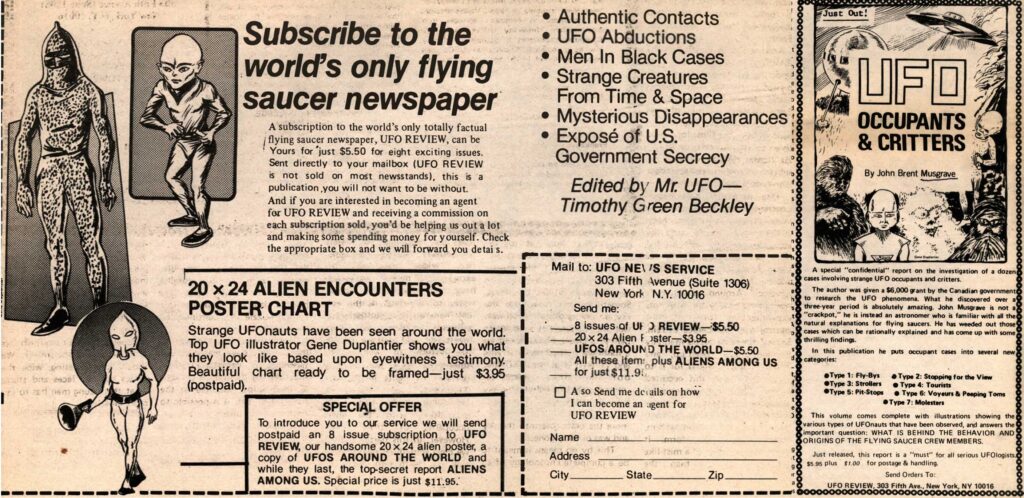
A more awful legacy is, as a well-known author, Strieber helped usher in the era of mainstreamed conspiracy theories. Once the province of teenagers, little old ladies in tennis shoes, and the neighborhood kook who wears a tinfoil hat, gullible purveyors of nuttery are anywhere, even in the highest reaches of our government, and it’s completely acceptable. Fox News spills wacky conspiracies to wild-eyed Americans 24 hours a day. We now have everyone from the judiciary to US Senators and Representatives spouting wildly stupid tales that would warrant a mental health evaluation in an earlier era. Pick any Tweet from the office of Marjorie Taylor Greene or Lauren Boebert on any day; you’ll read at least one lulu worthy of calling the Twinkie Mobile to haul them away. And when they speak of green Jewish space lasers, QAnon, and “deep-fake” thank Whitley for giving this lunacy credibility.
Finishing this entry up, I couldn’t help but scroll through Strieber’s Unknown County. His acolytes are agog over his new book Them, aptly named after a 1950s horror movie. Reading through a sample, it’s more of the same, with Whitley screaming that all terrestrial governments are in cahoots to “suppress the truth” about his “visitors.” That’s just dandy cooperation since all world governments can’t even agree on simple solutions to real pending catastrophes like mass immigration, climate change, and nukes in the hands of unstable world leaders.
One lone entry on his site cries out to be panned by me, though. After the Chinese spy balloon incident in February, Whitley had deep thoughts and asked: Are We Shooting Down the Visitors? I’ll answer that one. No, Whitley. We shot down a Chinese spy balloon, a middle-school Arduino balloon project, and an errant octagonal box kite. That’s what Americans do best – we blow the hell out of things with expensive toys.
Please, Whitley, you are now 77 years old. Stop confabulating, or the Twinkie Mobile may yet haul you away!

